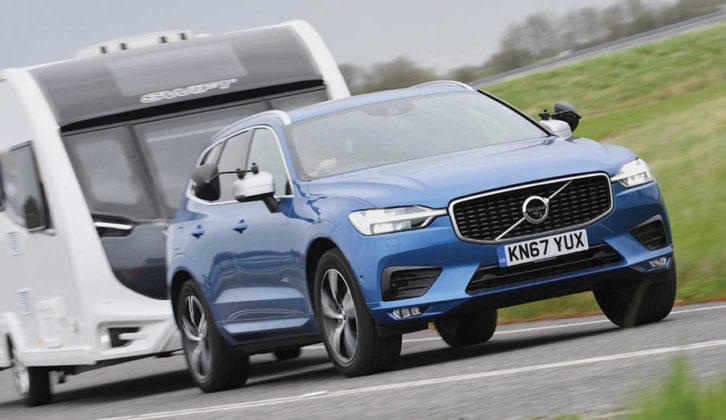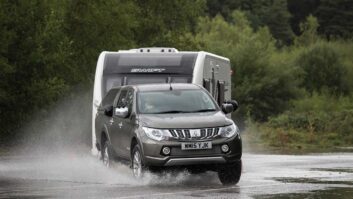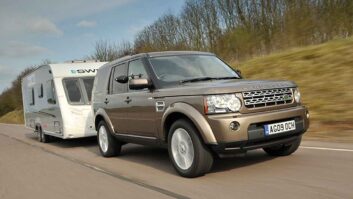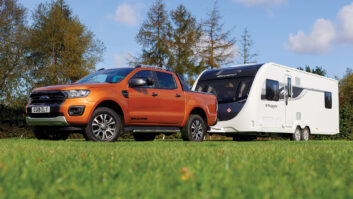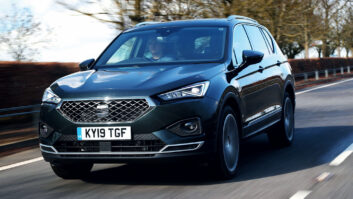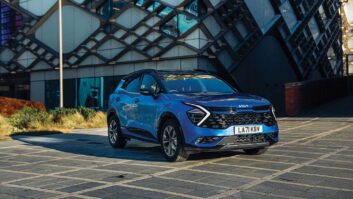Most caravanners with a small to medium-sized tourer probably have a two-wheel-drive tow car, while owners of bigger twin-axle caravans generally go for a 4X4, mainly because of their caravan weight requirements.
On the other side of the equation, most 4X4s are never used off-road, but mainly for towing. Four-wheel drive dates back almost as far as the car itself and 4WD trucks were common in WWI, but it took another conflict to bring them to the fore. The Willys Jeep from 1941 is the grandfather of the 4WD you tow with today.
Throughout the 1950s and 1960s, 4WD systems copied the Jeep. Rear-wheel drive was permanent, with selectable or part-time 4WD, via the second gearlever. The third gear lever
in 4x4s was for low-range gears when off-road and applies to few 4X4 tow cars today.
In 1970, the Range Rover brought in permanent 4WD, with all four wheels taking drive. A centre (or third) differential was now needed to allow for cornering and this had be
locked for true 4X4 traction.
Audi’s Quattro a decade later followed a similar – if technically different – route to permanent 4WD, with locking differentials required. Both Land Rover (with a viscous coupling) and Audi (with a Torsen gear group) later moved to the ‘automation’ of differential locking, removing driver input.
Hands-free 4X4
This developed further with the rise of the SUV or soft-roader. The Freelander Mk1 used a viscous coupling to drive the rear wheels once the fronts began to spin, while offerings from Nissan and Toyota used a clutch unit, electronically controlled, to achieve the same.
Even in large off-road 4X4s, a game of automotive catch-up evolved – as Japanese makers embraced permanent 4WD with mechanical locks, the European firms moved back to part-time systems, principally the same as the WWII Willys!
However, there was no second gearlever, not even a switch: it was all courtesy of a viscous coupling or an electronically controlled clutch pack, using the ABS sensors to detect wheelspin.
This all takes place without the driver knowing: in a fraction of a second, drive is transferred to the (so far) undriven wheels, as the driven pair spin.
Cruising on the motorway, virtually all modern 4WDs are actually 2WD, giving (tiny) fuel and CO2 savings.
Even the new Defender is 2WD in such environments, but always 4WD from a standing start, in freezing temperatures and in Terrain Response modes.
Simpler systems offer an off-road switch, generally only operating at less than 30mph or so, but ideal for moving off that wet CL or CS field.
Electronic control of the number of driven wheels can even be used in stability control systems, with split-second changes to torque available.
Using these systems for towing is not always simple. Generally, you should switch on everything. ‘Slippery’, ‘Trail’ or ‘Off-road’ modes will use hill descent if fitted and reduce ESP, to stop winding tracks fooling the system into cutting power owing to loss of stability. ‘Rock crawl’ locks the differentials, while ‘Sand’ lets the wheels spin. Do your homework on your car’s modes.
- We share our top caravan towing tips to help you stay safe on the road.
Top traction tips
- Permanent 4WD is now rare; it’s usually an ‘automated’ part-time system, so maintain a gentle but constant accelerator pressure to keep it engaged when moving off, and don’t ‘blip’ the throttle.
- Switch on ‘Sport’ mode (but not ‘Launch’ mode) in 4WD performance cars when towing off from rest; it will increase traction.
- Off-road tyres do as they say, but wear out sooner.
- Remember that 4WD is not magic: you can still get stuck, so it’s best to assess a muddy field on foot first.
If you’ve enjoyed reading this article, why not get the latest news, reviews and features delivered direct to your door or inbox every month. Take advantage of our brilliant Practical Caravan magazine SUBSCRIBERS’ OFFER and SIGN UP TO OUR NEWSLETTER for regular weekly updates on all things caravan related.
